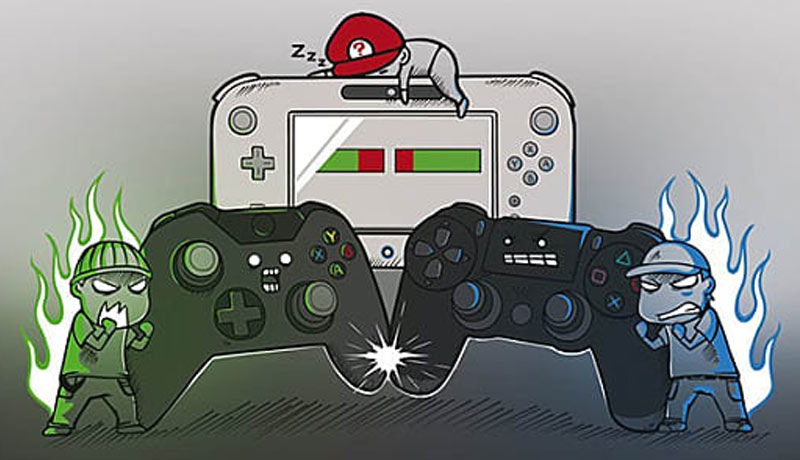1 April 2025, Tue |
10:58 PM

Globally, the gaming industry is growing at a rapid pace. From monochrome lines and shapes to 3D technicolor in 70 years, video games have made dramatic progress. Other sectors have also shown interest in this technology, like special effects, and training simulators.
In the last few decades, the industry has grown exponentially and not always in a smooth manner. Gaming has undergone more changes in the last 20 years than it has in the previous 50 because of increased competition between console manufacturers. With almost $160 billion worth of revenue, the gaming industry is poised for even further growth.
There has been a lot of change over the past 20 years, but not just in the look and feel of the games. Throughout this millennium, we have seen significant changes in the types of games available, how we purchase and play them, and even how we play them. Hence, a quick look at the video gaming industry’s progress throughout the last 20 years.

Online gaming has connected gamers all over the world. The improved internet speeds allowed players to play games without physically connecting their computers. MMORPGs (Massively Multiplayer Online Role-Playing Games) and MOBAs (Multiplayer Online Battle Arenas) rose to importance during the early 2000s, with World of Warcraft and Defense of the Ancients (DOTA) being the most influential games developed. Whenever you play online games. Everybody enjoys socializing. Gaming online allows players from different parts of the world to communicate with each other. It’s a great way to interact with them while having fun. Not only will they learn social skills, but they will also learn how to play in a team.

Revenue generated by the gaming industry is now largely dominated by mobile gaming. Game accessibility and a growing number of people playing them led to the birth of the social game. They were initially popular as part of social media platforms, where they helped friends play puzzle games such as scrabble against each other or to send items or lives to aid each other in their gameplay. A new generation of casual games started with Farmville, Candy Crush Saga, and Angry Birds, where controlling the game wasn’t difficult, and there wasn’t a long campaign to complete.
Mobile devices quickly became the platform for these games. Apple created the iPhone in 2007 to give users a pocket-sized computer they could carry around in their pockets, loaded with hundreds of high-quality games.

Competitive gaming is the future of gaming. It is expected that eSports will reach billions of dollars in the next few years, with an impressive fanbase.
In the decade that followed, video games continued to improve, with graphics getting better and the possibilities for gameplay virtually endless. Competitive gaming has become a mainstream phenomenon, however. Several new generations of gamers are accustomed to watching other people play games online through services such as YouTube and Twitch, with the ability to enjoy it just as much as watching a football match. Games of all kinds, from FIFA to League of Legends, are now a major element of eSports. There are still predictions for the industry to grow to $1.5 billion by 2023 by experts.

It is predicted that the market for AR and VR gaming will reach $11.0 billion by 2026, growing at an annual rate of 18.5%. AR, VR, and wearable technology have been driving growth in the market. Using these technologies, games create a realistic image in combination with sound and other sensations, allowing the player to feel physically present in the environment. Virtual worlds will replace the real world, and users will control them with their body movements. Thus, this innovation shows that AR and VR are at the beginning of a remarkable development. As time has advanced, gamers have more things to see.

Gaming console wars have taken off and continue even today with the arrival of next-generation consoles. The 21st century also marks the arrival of the next generation of gaming consoles. By contrast, Sony PlayStation saw its popularity soar as a result of its backward compatibility and DVD/CD capability. Later, it became the most popular gaming console of all time, a record it still holds to this day. During the early 2000s, Xbox and GameCube were introduced by Microsoft. From 3 December 1994 when Sony unveiled the PlayStation 1 to the world, to now with Sony’s latest console the PlayStation 5, technology has come a long way.
From video games development to computer creation, the gaming industry has grown exponentially thanks to technological advances. A global movement against restrictions has enabled video games to become a way to meet new people, develop friendships, and stay in touch — all thanks to video games. In fact, today’s video games are an integral part of our daily lives, becoming a kind of entertainment industry.

This story is attributed to Omar Abdulla, Content Developer at TECHx Omar Abdulla is a university student with a passion for business, artificial intelligence, and technology. He is also knowledgeable about digital marketing, content creation, financial management, and coding. Omar is a team player, an active thinker, and an open-minded guy who approaches work with a problem-solving attitude. He possesses technical skills in programming and design.